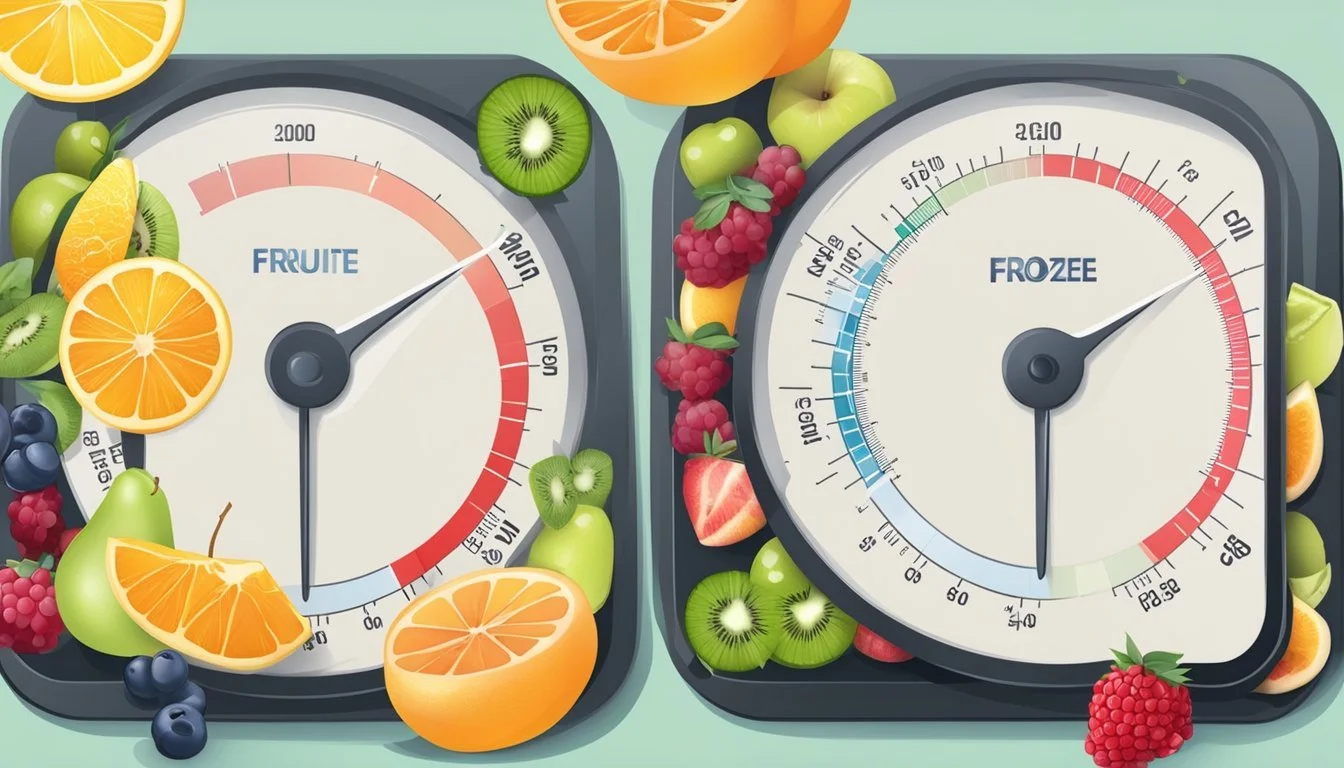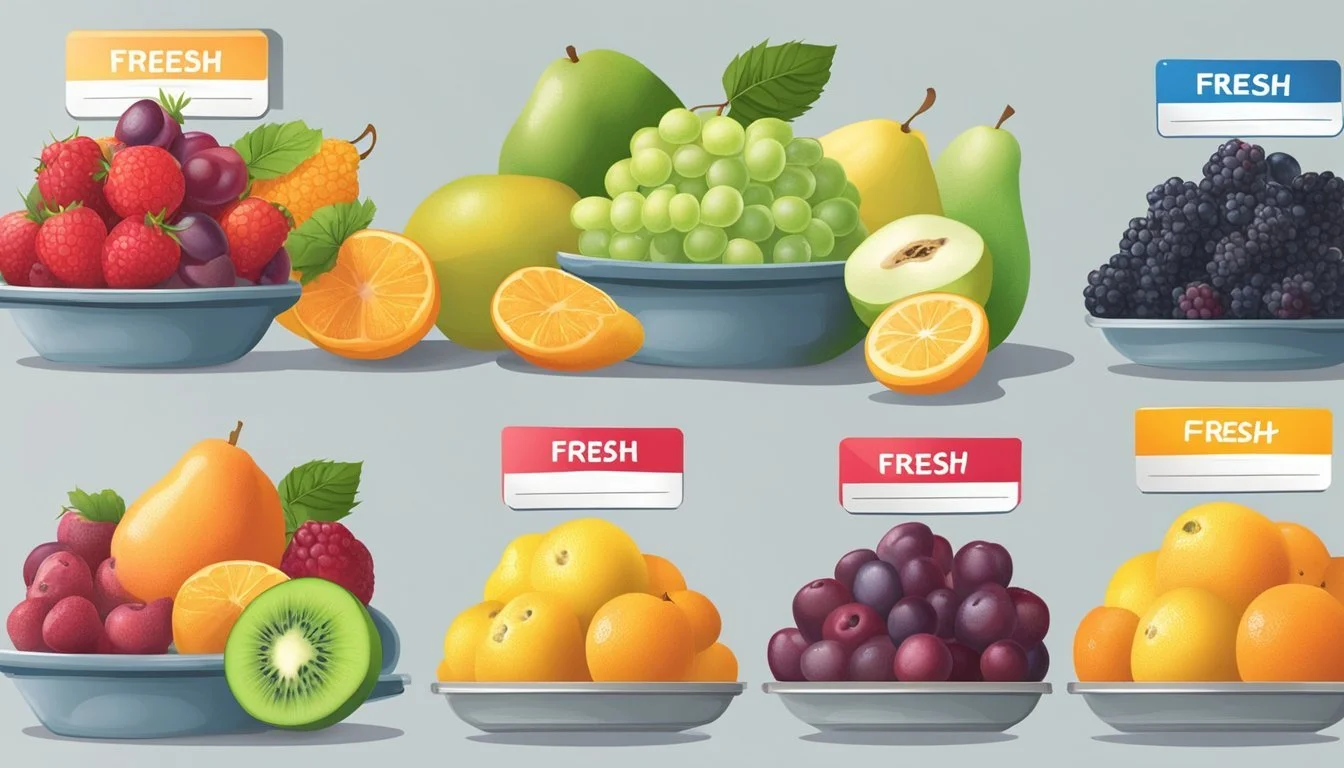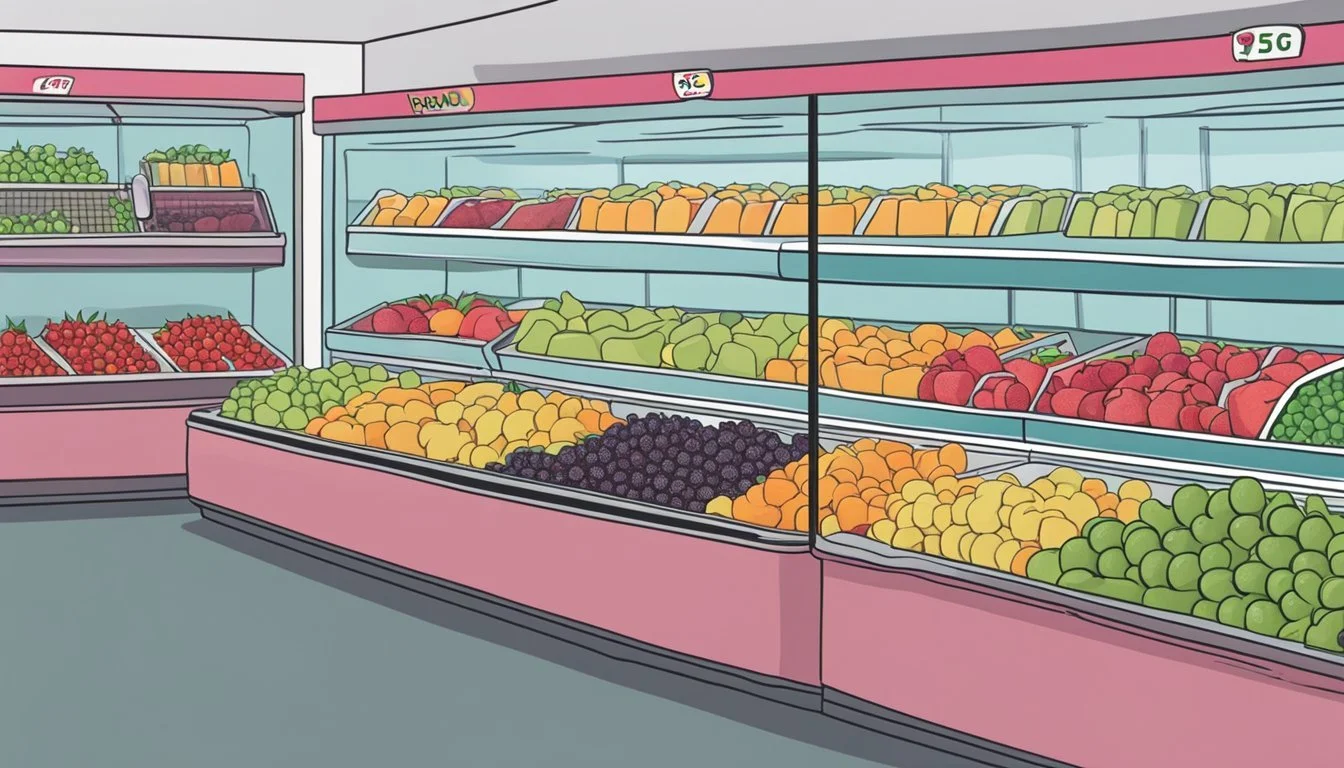Frozen vs Fresh Fruit Price: Which Option Saves You More?
When it comes to fruit consumption, consumers often face a choice between fresh and frozen options. This decision can significantly impact both their wallets and nutritional intake. While fresh fruit is often perceived as superior, frozen fruit offers its own set of advantages.
Frozen fruit is generally more cost-effective than fresh fruit, especially when purchased out of season. Fresh fruit prices fluctuate based on seasonality and availability, while frozen fruit maintains a more consistent price point throughout the year. This price stability allows consumers to enjoy their favorite fruits year-round without breaking the bank.
Interestingly, frozen fruit can sometimes be more nutritious than its fresh counterpart. Fruits are typically frozen at peak ripeness, locking in nutrients that might otherwise degrade during transport and storage of fresh produce. This preservation method ensures that frozen fruit retains its nutritional value, making it a smart choice for health-conscious shoppers looking to balance nutrition and cost.
Comparative Analysis of Fresh and Frozen Fruit
Fresh and frozen fruits offer distinct advantages in nutrition, taste, and convenience. Their differences impact how consumers choose and use them in various culinary applications.
Nutritional Value: Fresh vs. Frozen
Frozen fruits often retain comparable or even higher nutrient levels than their fresh counterparts. Studies show that freezing can preserve vitamins and minerals effectively. For example, frozen apricots contain significantly more vitamin C, beta-carotene, and antioxidants than fresh ones.
Fresh fruits may lose nutrients during transport and storage. However, they provide enzymes that can be lost in the freezing process. Both options offer essential fiber, vitamins, and minerals crucial for a healthy diet.
Frozen fruits maintain their nutritional value for 8-12 months when stored properly. This longevity makes them a reliable source of nutrients year-round.
Taste and Texture Considerations
Fresh fruits generally offer superior texture and flavor when consumed at peak ripeness. Their crisp or juicy consistencies are hard to replicate in frozen form.
Frozen fruits can become mushy upon thawing due to ice crystal formation during freezing. This texture change makes them less suitable for raw consumption but ideal for smoothies, baking, and cooking.
Some fruits, like berries, maintain their flavor well when frozen. Others may experience slight taste alterations. The freezing process can intensify sweetness in some fruits, which can be advantageous in certain recipes.
Convenience and Usage in Meals
Frozen fruits provide unmatched convenience. They're pre-washed, cut, and ready to use, saving time in meal preparation. This convenience makes them popular for smoothies, desserts, and quick snacks.
Fresh fruits require washing and often peeling or cutting before use. However, they're versatile for both raw consumption and cooking. Fresh fruits are ideal for garnishes, salads, and dishes where texture is crucial.
Frozen fruits have a longer shelf life, reducing food waste. They allow consumers to enjoy out-of-season fruits year-round. Fresh fruits offer immediate enjoyment but require more frequent shopping trips to maintain a steady supply.
Food Safety, Preservation, and Spoilage
Freezing and proper storage techniques play crucial roles in maintaining food quality and safety. These methods impact shelf life, nutrient retention, and the need for chemical preservatives.
Freezing Process and Its Impact on Food Quality
Freezing slows enzyme activity in foods, helping preserve quality. For vegetables, blanching before freezing is often necessary to halt enzyme processes that can cause deterioration. Fruits generally freeze well due to their natural acidity.
Rapid freezing creates smaller ice crystals, better preserving texture and flavor. Commercial flash-freezing produces superior results compared to home freezing methods.
Frozen fruits retain most of their nutritional value. Studies show that vitamin C, folate, and beta-carotene levels in frozen produce are comparable to fresh counterparts.
Shelf Life: Fresh vs. Frozen
Fresh fruits typically last 1-2 weeks when refrigerated properly. Frozen fruits can maintain quality for 8-12 months when stored at 0°F (-18°C).
Proper packaging is essential for frozen storage. Air exposure leads to freezer burn, affecting taste and texture.
Fresh produce gradually loses nutrients over time. Frozen fruits lock in nutrients at their peak, often resulting in higher vitamin content compared to fresh fruits stored for several days.
Food waste is reduced with frozen options, as they can be used as needed without spoiling quickly.
Chemicals and Additives in Preservation
Fresh fruits rarely contain preservatives, relying on refrigeration for extended shelf life. Some may be coated with food-grade wax to prevent moisture loss.
Frozen fruits typically don't require additional preservatives due to the freezing process itself acting as a preservation method.
Ascorbic acid (vitamin C) is sometimes added to frozen fruits to prevent browning and preserve color. This additive is generally considered safe and can boost the fruit's nutritional value.
Sugar or syrup may be added to some frozen fruit products, impacting calorie content. Always check labels for added ingredients.
Economic Aspects of Fruit Consumption
Fruit consumption patterns are significantly influenced by economic factors. Price fluctuations, affordability, and seasonal availability play crucial roles in shaping consumer choices between fresh and frozen options.
Pricing Trends for Fresh vs. Frozen Fruit
Fresh fruit prices have seen notable increases in recent years. A survey found that 65% of consumers perceive fresh fruit prices to have risen, compared to 57% in 2020. Of those who noticed price hikes, 82% believe the increases were higher than justified.
Frozen fruit prices have also increased, with a significant jump of nearly 12%. This rise has narrowed the price gap between fresh and frozen options.
Despite price increases, Americans can still meet dietary guidelines for fruit consumption at a relatively modest cost of $2.10-$2.60 per day.
Cost-Effectiveness and Affordability
Frozen fruits often provide a cost-effective alternative to fresh options, especially during off-seasons. Their longer shelf life reduces waste, potentially offering better value for money.
Fresh fruits account for a significant portion of produce sales, representing 78.8% in January 2022. This slight decrease from 80.8% in 2019 suggests a small shift towards frozen and canned alternatives.
Consumer savings rates have increased from 7.6% in 2019 to 12% in 2021, potentially allowing for more flexibility in fruit purchasing decisions.
Seasonal Variations in Price and Availability
Fruit prices and availability fluctuate throughout the year due to seasonal factors. Fresh fruit prices typically peak during off-seasons when supply is limited.
Frozen fruits offer consistent year-round availability, mitigating seasonal price spikes. This stability can be particularly beneficial for budget-conscious consumers.
Seasonal variations also impact the nutritional value of fruits. Fresh fruits may offer peak nutrition when in season, while frozen fruits can retain nutrients effectively year-round.
Health Impacts of Fruit Choices
Fruits provide essential nutrients and compounds that can significantly influence health outcomes. Their consumption is linked to reduced risks of chronic diseases and improved overall well-being.
Role of Fruits in Disease Prevention
Fruits are rich in antioxidants, which help protect cells from damage caused by free radicals. This protective effect may lower the risk of heart disease and certain cancers. Regular fruit intake is associated with reduced blood pressure and decreased likelihood of stroke.
Fiber in fruits aids digestion and helps maintain healthy blood sugar levels. This can be particularly beneficial for managing or preventing diabetes. Fruits like berries, citrus, and apples are especially high in fiber.
Many fruits contain vitamin C, which supports immune function and skin health. Folate, found in fruits like oranges and strawberries, is crucial for cell growth and development.
Added Sugars and Sodium in Fruit Products
While fresh fruits are naturally low in sodium and free from added sugars, processed fruit products can be a different story. Canned fruits often contain added sugars or syrups, which can contribute to excess calorie intake and tooth decay.
Some dried fruits may have added sugars or preservatives. It's important to check labels and choose unsweetened varieties when possible. Fruit juices, even when 100% juice, are concentrated sources of natural sugars and lack the fiber of whole fruits.
Sodium levels in canned fruits can be high due to preservation methods. Rinsing canned fruits before consumption can help reduce sodium content.
The Balance of Vitamins and Minerals in Daily Diet
Fruits contribute various vitamins and minerals essential for a balanced diet. Vitamin A, found in mangoes and apricots, supports eye health and immune function. Many fruits are good sources of potassium, which helps regulate blood pressure.
Iron absorption from plant sources is enhanced by vitamin C in fruits. This is particularly important for vegetarians and vegans. Magnesium, present in fruits like bananas and figs, plays a role in muscle and nerve function.
Calcium-rich fruits like oranges and kiwis contribute to bone health. Zinc, found in smaller amounts in fruits, supports immune function and wound healing. Vitamin E, an antioxidant found in avocados, helps protect cells from oxidative stress.
Environmental and Agricultural Factors
The environmental impact of fruit production and distribution varies significantly between fresh and frozen options. Sustainable practices, processing methods, and carbon footprints play crucial roles in determining the overall ecological effects.
Sustainable Practices in Fruit Farming
Sustainable fruit farming focuses on minimizing environmental harm while maximizing productivity. Many farmers employ integrated pest management to reduce chemical use. Crop rotation helps maintain soil health and biodiversity.
Water conservation techniques like drip irrigation are increasingly common. Some orchards incorporate cover crops to prevent erosion and enhance soil nutrients.
Organic farming practices avoid synthetic pesticides and fertilizers. This approach can lead to lower yields but often results in improved soil and water quality.
Impact of Processing and Harvesting Techniques
Fresh fruit harvesting often involves manual labor to ensure quality. This can reduce fuel consumption compared to mechanized methods.
Frozen fruit processing typically uses more energy due to freezing and storage requirements. However, it allows for harvesting at peak ripeness, potentially reducing food waste.
Flash-freezing techniques help preserve nutritional value. This process can lock in vitamins and minerals that might degrade in fresh fruits during transport and storage.
Carbon Footprint of Frozen vs. Fresh Produce
Fresh produce often has a lower carbon footprint when sourced locally and in season. Short transportation distances and minimal processing contribute to this advantage.
Frozen fruits can have a higher initial carbon footprint due to energy-intensive freezing processes. However, they may result in less food waste, offsetting some environmental impacts.
Year-round availability of frozen fruits can reduce the need for long-distance transportation of fresh produce during off-seasons. This factor can potentially lower overall emissions in some cases.
Storage of frozen fruits requires constant refrigeration, contributing to ongoing energy use. Fresh fruits generally require less energy for short-term storage but may spoil faster.
Consumer Preferences and Trends
Consumer preferences for fresh and frozen fruits are evolving, influenced by factors like price, convenience, and perceived nutritional value. Market trends show shifting demands for organic options and increased health awareness among fruit consumers.
Popularity of Fresh vs. Frozen Fruits in Diet
Fresh fruits remain popular among consumers, with many perceiving them as superior in taste and nutrition. However, frozen fruits are gaining ground. Recent surveys indicate 40% to 50% of consumers now view frozen fruits as equal to or better than fresh options.
Convenience plays a significant role in this shift. Frozen fruits offer year-round availability and longer shelf life, appealing to busy consumers. They also reduce food waste, a growing concern for environmentally conscious shoppers.
Price is another factor influencing preferences. While fresh fruits are often perceived as more expensive, 62% of consumers believe they cost more than frozen alternatives. This perception has contributed to the increasing popularity of frozen options.
Market Demand for Organic and Non-organic Options
Organic fruit demand continues to grow, driven by health-conscious consumers. Both fresh and frozen organic fruits are seeing increased market share. Non-organic options remain dominant due to lower prices and wider availability.
Consumers often choose organic for fruits with edible skins, believing they have fewer pesticide residues. Frozen organic fruits are gaining popularity as they offer the benefits of organic produce with extended shelf life.
Price sensitivity impacts organic fruit purchases. Some consumers opt for a mix of organic and non-organic fruits to balance health concerns with budget constraints.
Trends in Fruit Consumption and Health Awareness
Health awareness is driving increased fruit consumption. Consumers are more informed about the nutritional benefits of fruits, leading to higher demand for both fresh and frozen options.
Smoothie trends have boosted frozen fruit sales. Consumers appreciate the convenience and nutrition of frozen fruits for blending. This trend aligns with the growing interest in plant-based diets and functional foods.
Exotic and superfruit demand is rising. Consumers seek variety and specific health benefits from fruits like acai, goji berries, and dragon fruit. Frozen options make these exotic fruits more accessible year-round.
Portion-controlled frozen fruit packs are gaining popularity. They cater to health-conscious consumers looking for convenient, pre-measured servings for snacks or recipe use.







